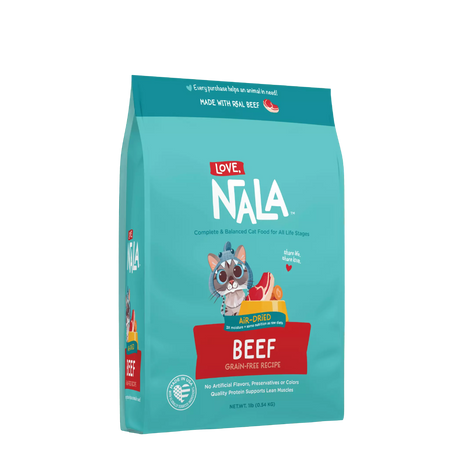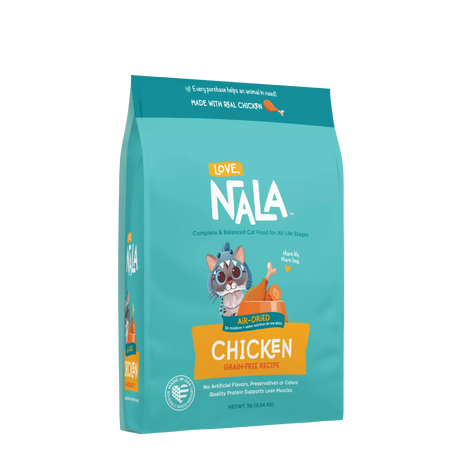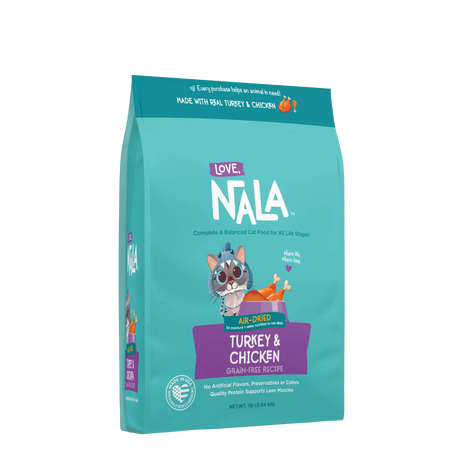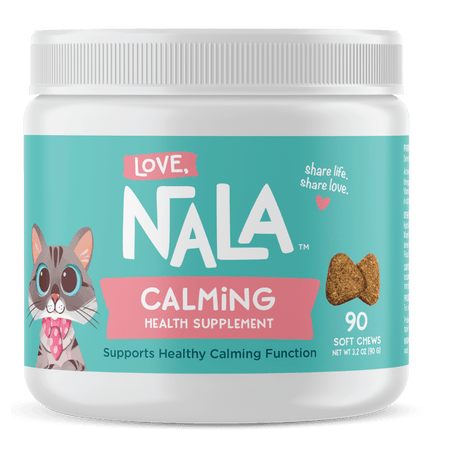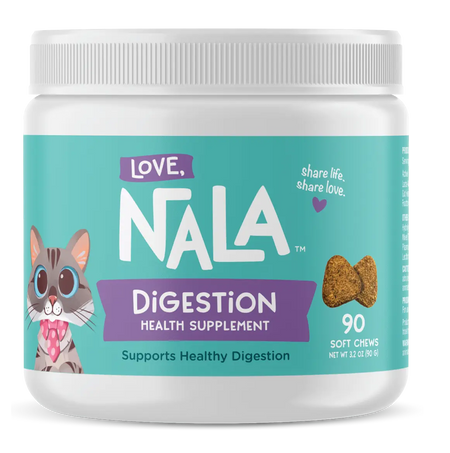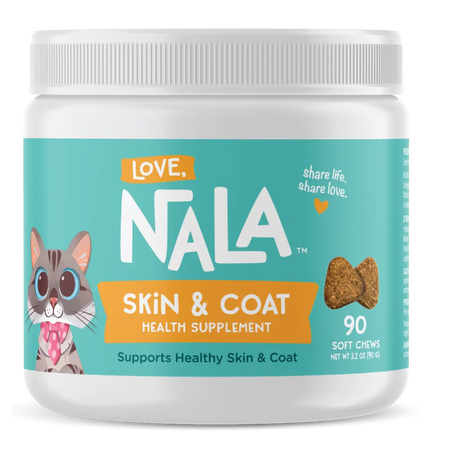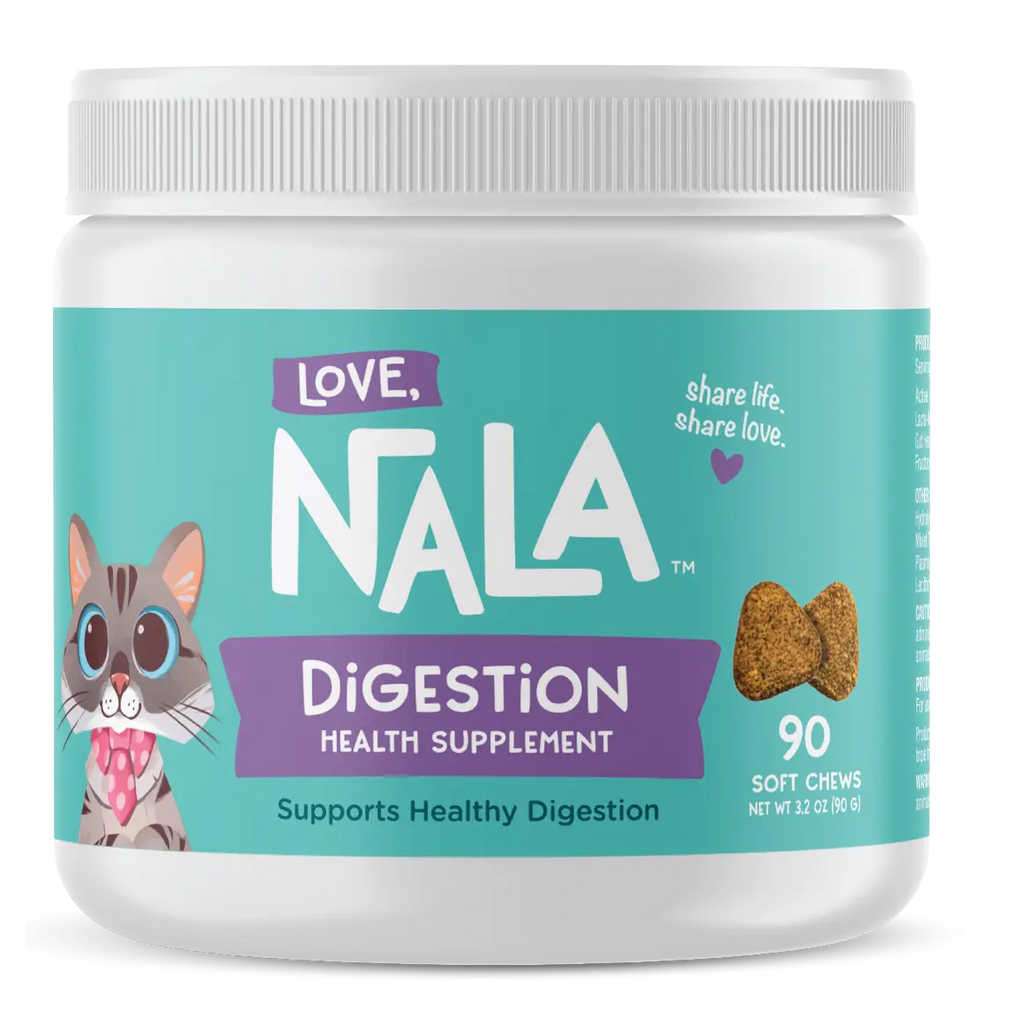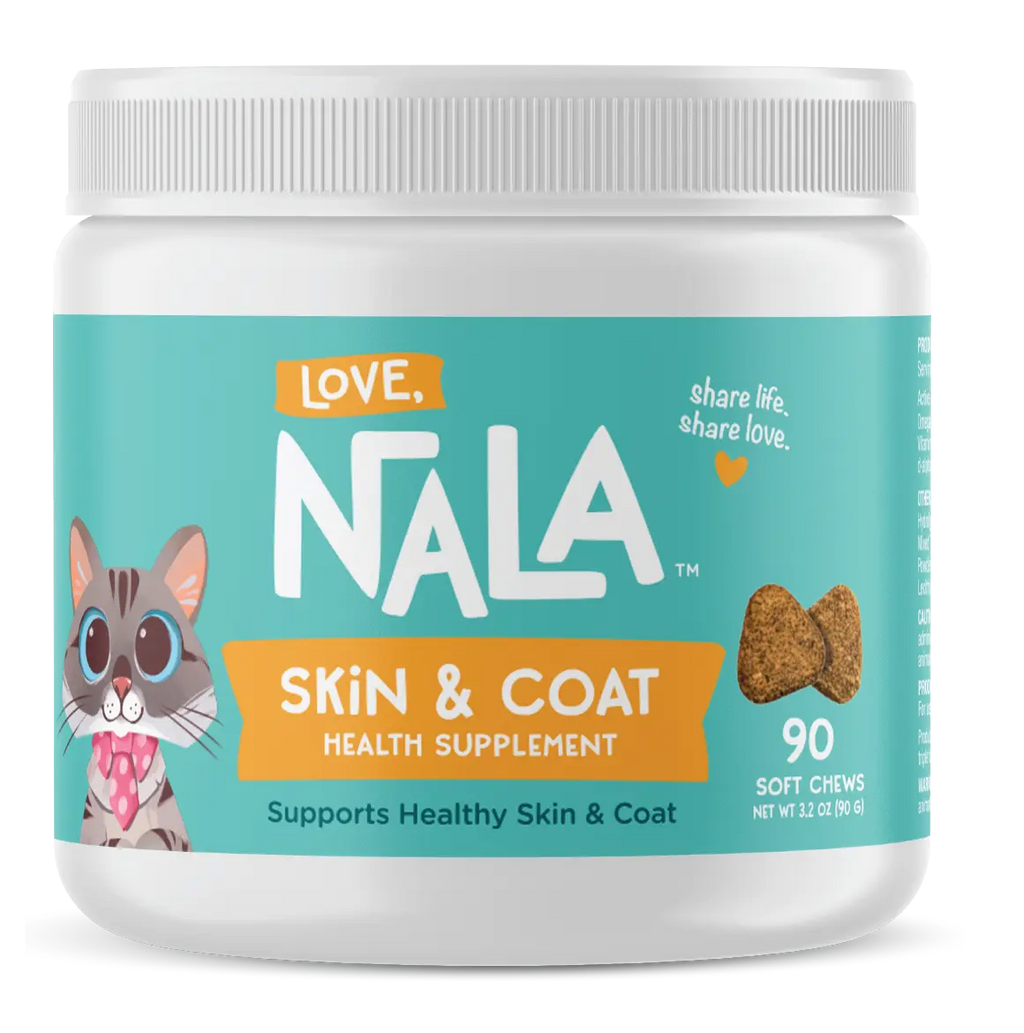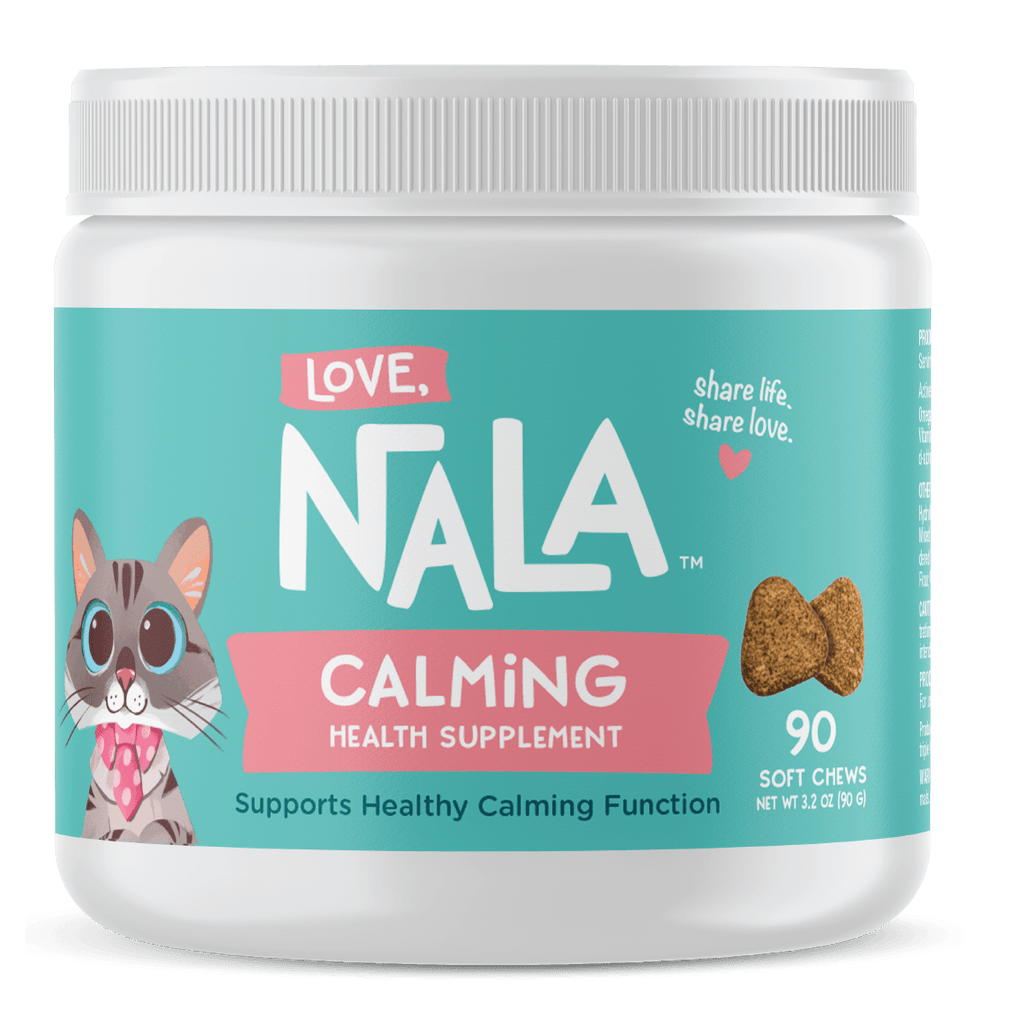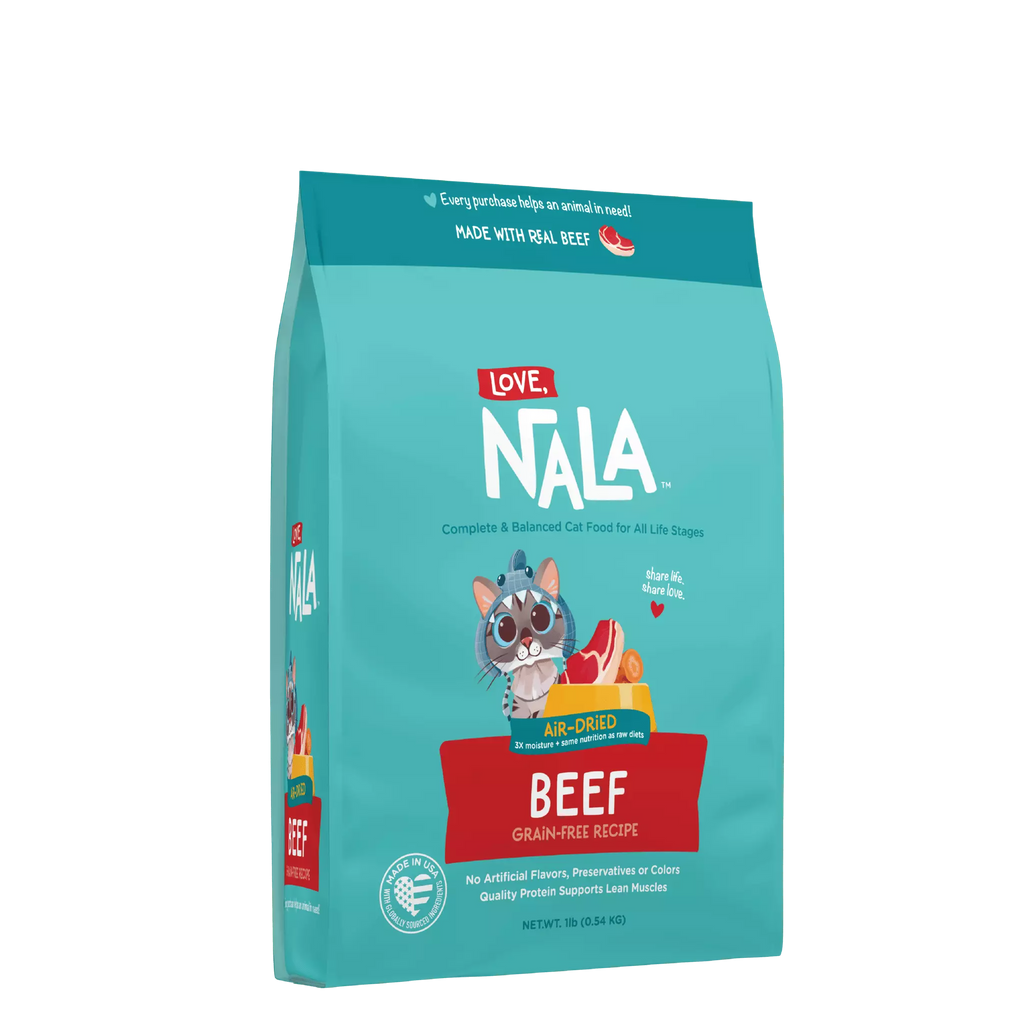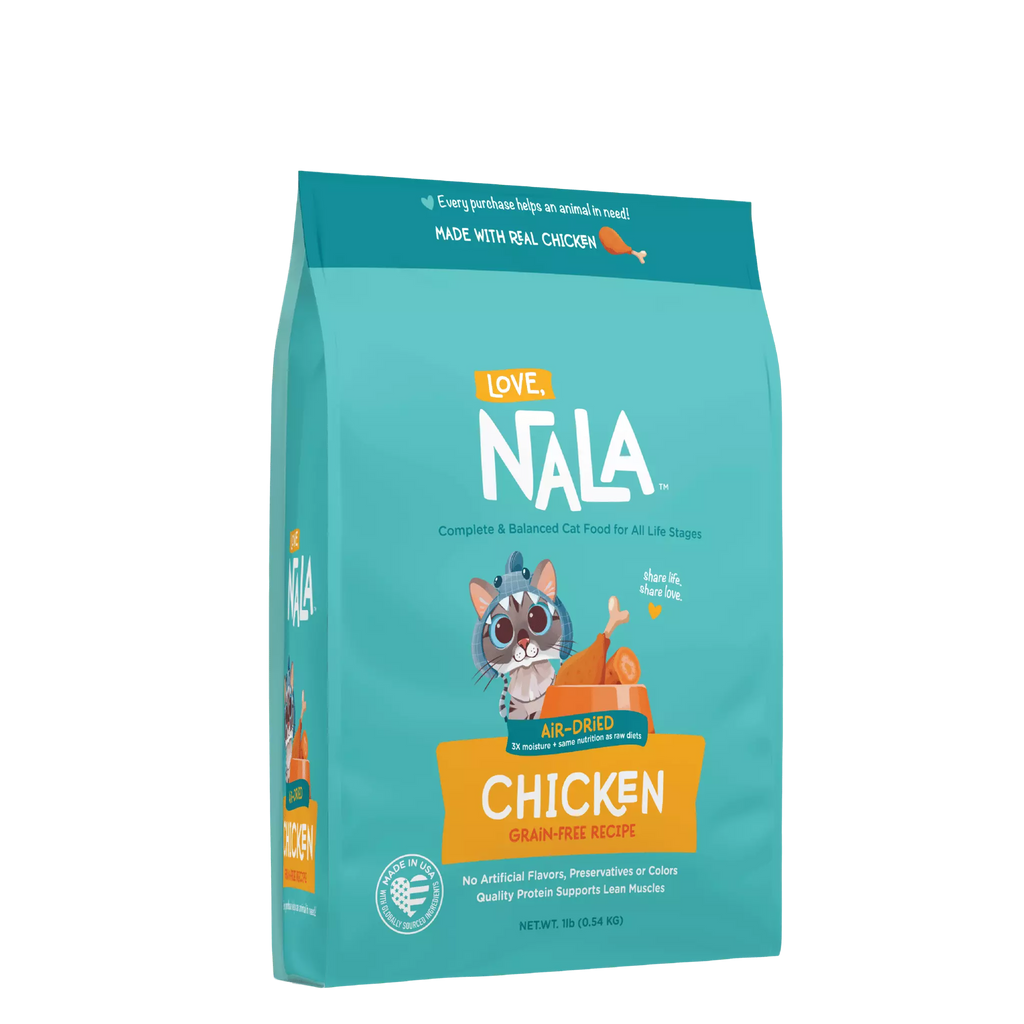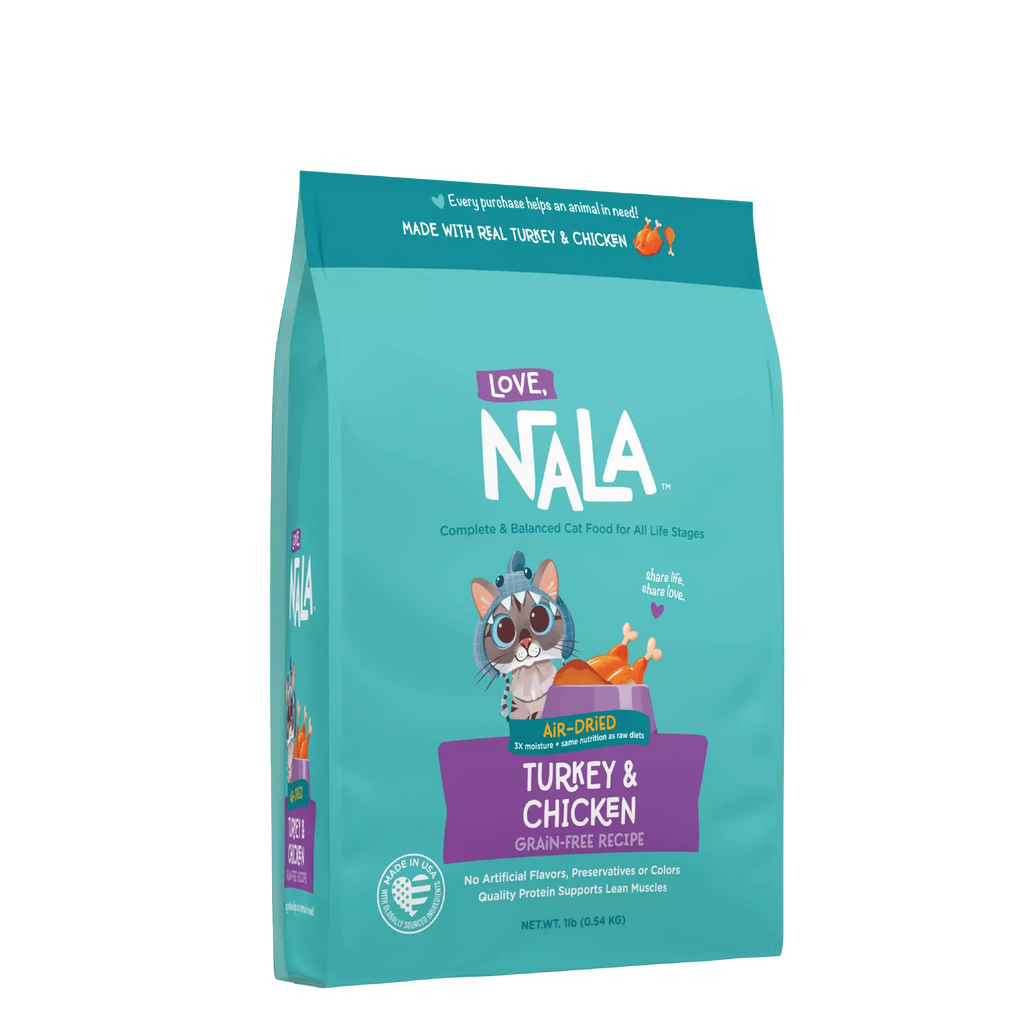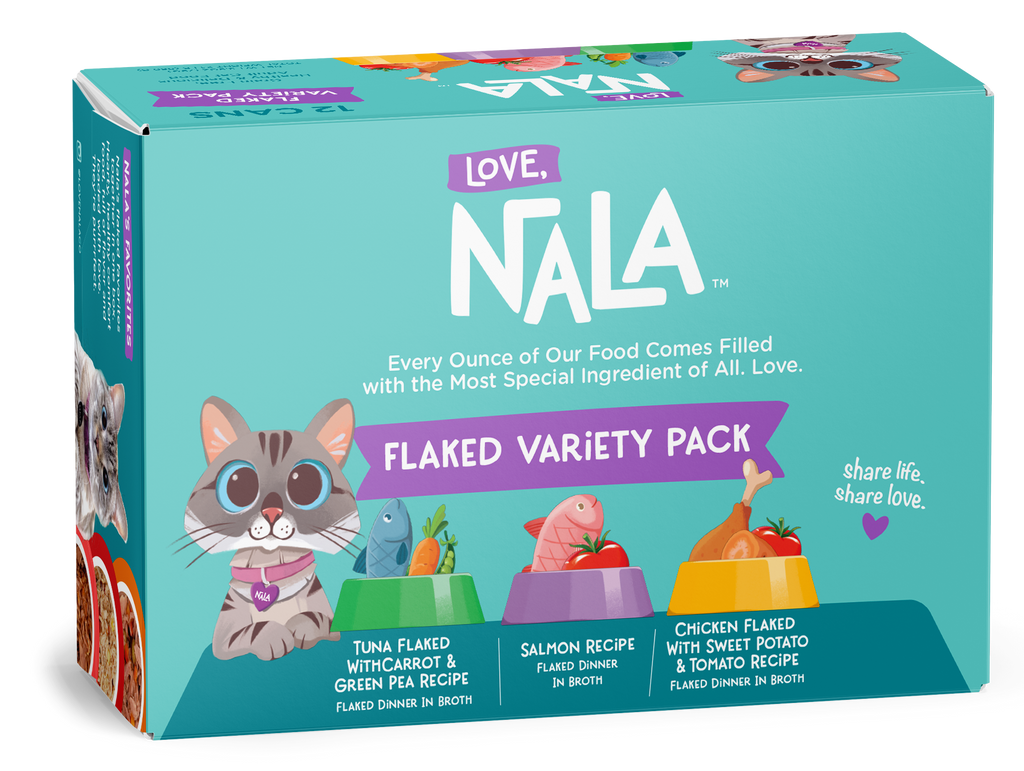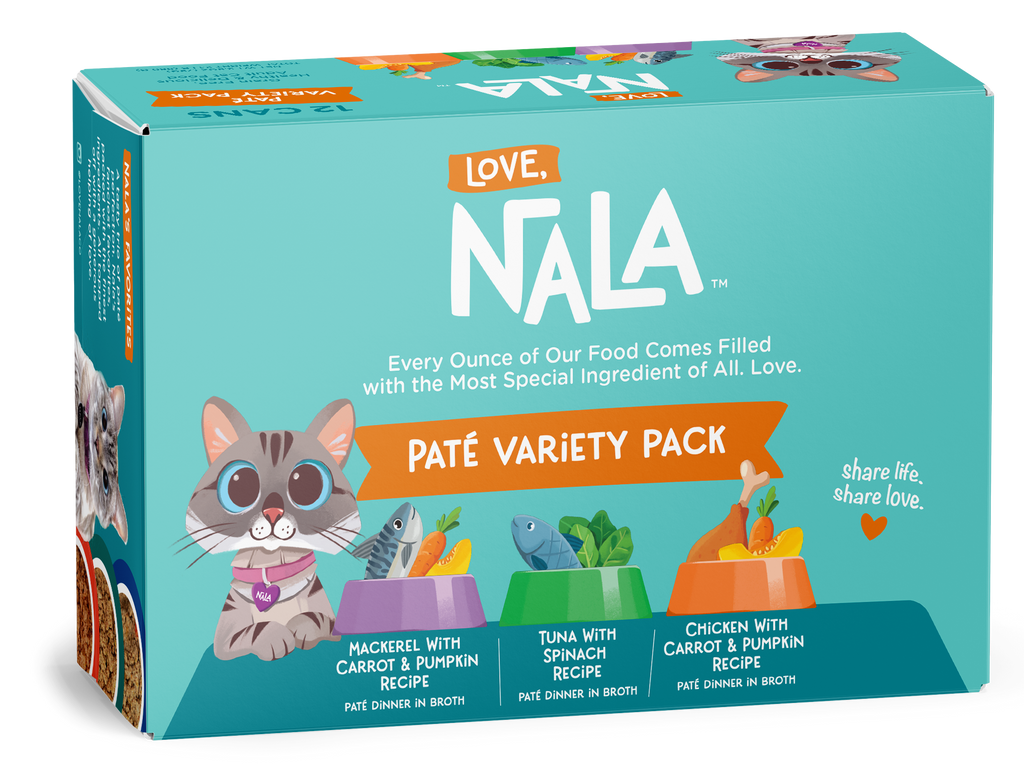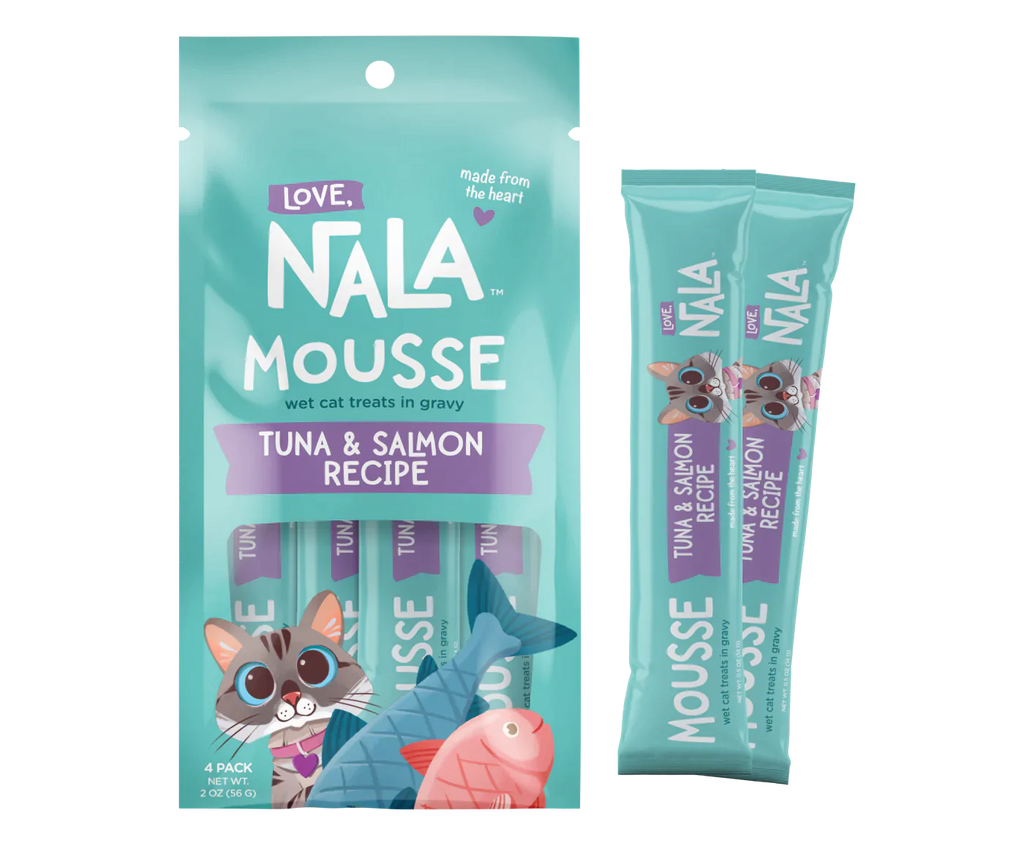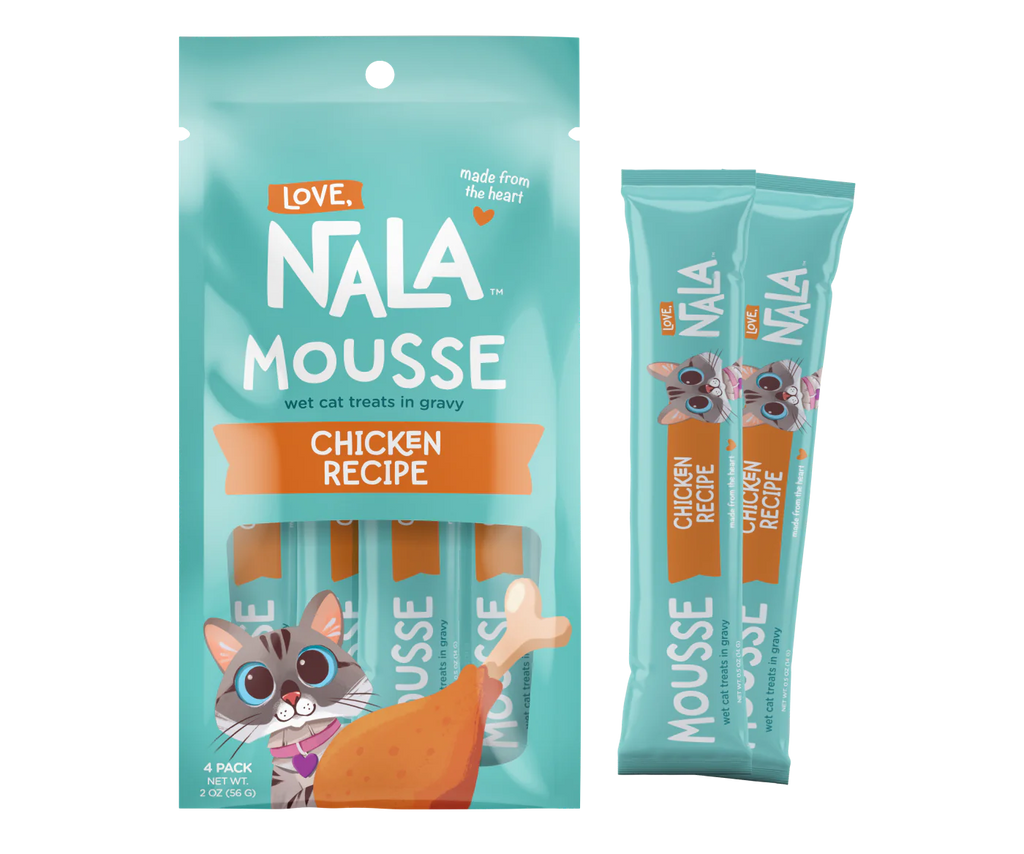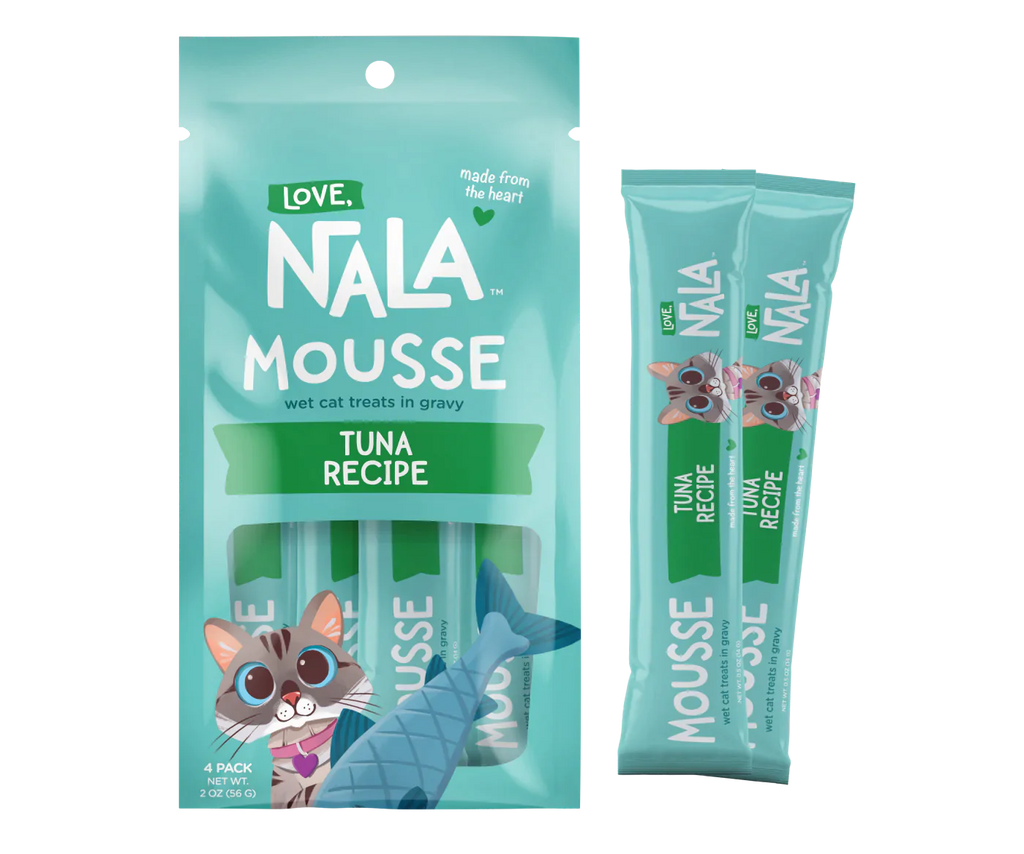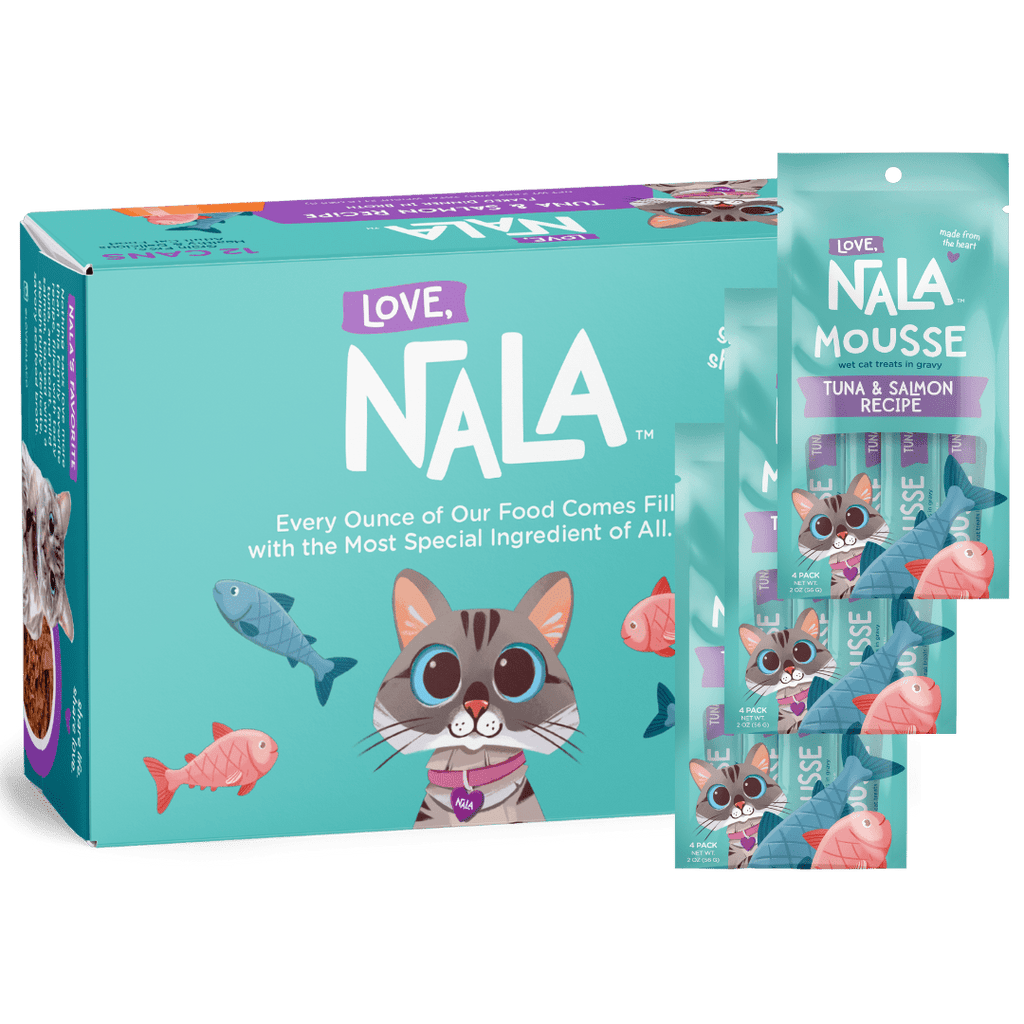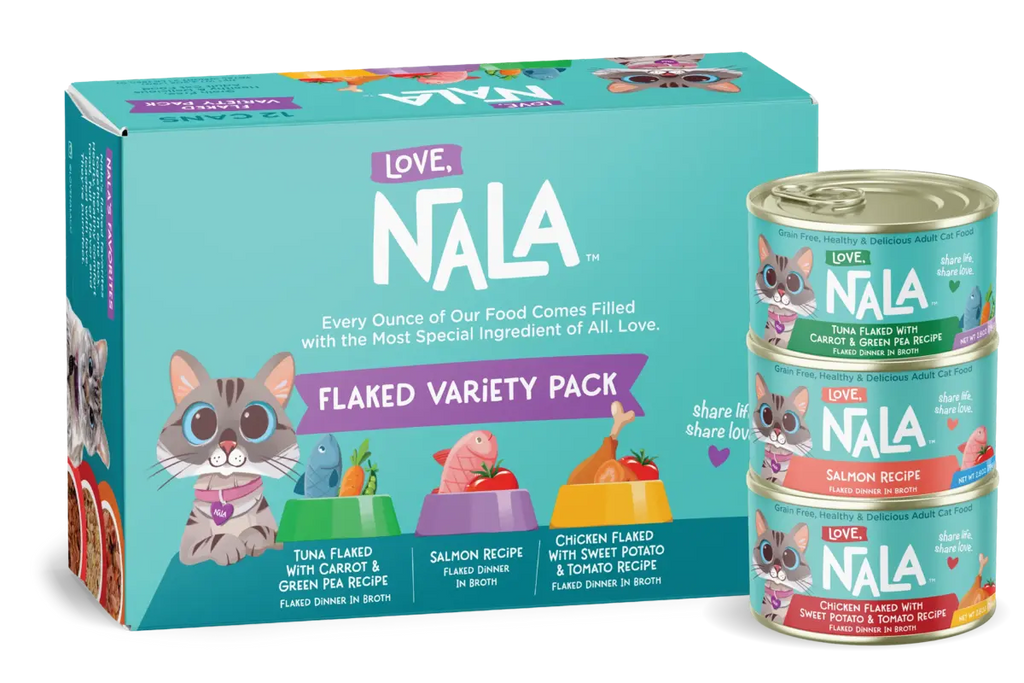Frequently Asked Questions

Support Email

Support Phone
+1-927-234-424
Canned Cat Food
An adult cat typically needs about 3 ounces of canned food per 3.5 pounds of body weight per day, split into two meals. However, the exact amount can vary depending on the cat's age, activity level, and health. Always consult with a veterinarian for specific dietary recommendations for your cat.
Kittens should eat about 4-6 ounces of canned food daily, divided into 3-4 meals. This amount can vary depending on the kitten's age, size, and activity level. It's important to consult a veterinarian to determine the appropriate feeding amount and schedule for your kitten's specific needs.
To encourage a cat to eat canned food, start by mixing a small amount with their usual food, gradually increasing the canned food proportion. Ensure the food is at room temperature to enhance its aroma. Offer a variety of flavors and textures to determine their preference. Patience and consistency are important.
An adult cat typically needs about 3 ounces of canned food per 3.5 pounds of body weight per day, split into two meals. However, the exact amount can vary depending on the cat's age, activity level, and health. Always consult with a veterinarian for specific dietary recommendations for your cat.
An adult cat generally needs about 3 ounces of canned food per 3.5 pounds of body weight per day, typically divided into two meals. However, this can vary based on the cat's age, activity level, and health. It's advisable to consult with a veterinarian for a personalized feeding plan.
To store open canned cat food, cover the can or transfer its contents to an airtight container, and refrigerate it. This keeps the food fresh for up to 5 days. Serve it at room temperature, as some cats may not like cold food. Discard any uneaten food after 4 hours to prevent spoilage.
The price of canned cat food varies significantly based on brand, quality, and size. Economy brands can cost as little as $0.50 to $1.00 per can, while premium or specialty brands may range from $1.50 to $4.00 or more per can. Bulk purchases often provide better value.
Kittens typically require about 4-6 ounces of canned food per day, divided into 3-4 meals. The exact amount depends on the kitten's age, size, and activity level. It's important to consult a veterinarian for specific feeding guidelines tailored to your kitten's individual nutritional needs.
For a senior cat, the amount of canned food needed daily varies based on health, weight, and activity level. Generally, they may need about 3 ounces per 3.5 pounds of body weight, but this can differ. It's important to consult a veterinarian for specific feeding recommendations tailored to your senior cat's needs.
The cost of canned cat food varies widely, depending on brand, quality, and size. Economy brands may be priced around $0.50 to $1.00 per can, while premium or specialized diets can range from $1.50 to over $4.00 per can. Bulk purchasing often results in cost savings.
To encourage a picky cat to eat canned food, mix a small amount into their usual dry food, gradually increasing the proportion. Serve at room temperature to enhance aroma. Try various flavors and textures to find their preference. Offering food at regular times and in a quiet environment can also help. Patience is key.
Store leftover canned cat food by transferring it to an airtight container and refrigerating it, which keeps it fresh for up to 5 days. Serve the food at room temperature, as some cats may not like it cold. Discard any uneaten food after 4 hours to prevent spoilage.
An adult cat typically requires about 3 ounces of canned food per 3.5 pounds of body weight per day, usually divided into two meals. This amount can vary based on factors like age, activity level, and health. Consult with a veterinarian for specific dietary recommendations tailored to your cat's needs.
Kittens typically need about 4-6 ounces of canned food daily, divided into 3-4 meals. The exact amount depends on the kitten's age, size, and activity level. Consult a veterinarian for specific feeding guidelines tailored to your kitten's individual nutritional requirements.
To encourage a cat to eat canned food, gradually mix it with their regular dry food, increasing the wet food portion over time. Serve at room temperature to enhance its smell. Offer a variety of flavors and textures to find their preference. Be patient, as some cats need time to adjust to new foods.
An adult cat typically requires about 3 ounces of canned food per 3.5 pounds of body weight per day, usually divided into two meals. This amount can vary based on factors such as age, activity level, and health. Consult a veterinarian for a feeding plan tailored to your cat's specific needs.
Store open canned cat food by covering the can or transferring its contents to an airtight container, then refrigerate it. This keeps the food fresh for up to 5 days. Serve it at room temperature, as some cats may not like cold food. Discard any uneaten food after 4 hours to prevent spoilage.
The price of canned cat food varies significantly, influenced by brand, quality, and size. Economy brands might be priced around $0.50 to $1.00 per can. Premium or specialty foods can range from $1.50 to $4.00 or more per can. Bulk purchases often provide better value.
Kittens typically need about 4-6 ounces of canned food per day, split into 3-4 meals. This varies depending on the kitten's age, size, and activity level. It's crucial to consult a veterinarian for precise feeding recommendations tailored to your kitten's individual nutritional needs.
For a senior cat, the amount of canned food needed daily varies based on health, weight, and activity level. Generally, they may need about 3 ounces per 3.5 pounds of body weight, but this can differ. It's important to consult a veterinarian for specific feeding recommendations tailored to your senior cat's needs.
The cost of canned cat food varies widely, depending on brand, quality, and size. Economy brands may be priced around $0.50 to $1.00 per can, while premium or specialized diets can range from $1.50 to over $4.00 per can. Bulk purchasing often results in cost savings.
Encouraging a picky cat to eat canned food can be gradual. Start by mixing a small amount of canned food with their regular diet, slowly increasing the proportion. Offer different flavors and textures to find their preference. Serve food at room temperature for enhanced aroma. Consistency and patience are key. Regular, calm feeding times help too.
To store leftover canned cat food, transfer it to an airtight container and refrigerate. This keeps it fresh for up to 5 days. Before serving again, bring the food to room temperature, as cats often prefer it this way. Discard any uneaten food after 4 hours to prevent spoilage.
Cat Food
The amount of wet food to feed a cat depends on its age, size, and activity level. Generally, adult cats require about 3 ounces of wet food per 3.5 pounds of body weight daily, split into two meals. However, always consult your vet for personalized feeding recommendations.
Kittens need more food per pound of body weight than adult cats. Typically, they should be fed about 4-6 ounces of wet food daily, divided into 3-4 meals. This varies with age, size, and activity level. Consult your veterinarian for specific guidance tailored to your kitten’s needs.
An adult cat generally requires about 3 ounces of wet food per 3.5 pounds of body weight each day, typically divided into two meals. However, individual needs vary based on age, activity level, and health. Consult a veterinarian for a feeding plan tailored to your cat's specific needs.
Kittens usually need about 4-6 ounces of wet food daily, spread across 3-4 meals. This amount can vary based on the kitten's age, size, and activity level. It's essential to consult with a veterinarian to tailor the feeding amount to your kitten's specific nutritional needs.
To encourage kittens to eat wet food, start by offering small amounts at room temperature, as this enhances the food's aroma. Mix wet food with kitten formula or water initially, making a slurry. Gradually decrease the liquid. Offer food regularly and be patient, as kittens may need time to adjust.
To encourage a cat to eat wet food, start by mixing a small amount with their regular dry food, gradually increasing the wet food proportion. Ensure the food is at room temperature to enhance its aroma. Offer different flavors and textures to find their preference. Patience and consistency are key.
To store open wet cat food, cover the can or transfer contents to an airtight container. Refrigerate it to keep it fresh; it can typically be stored for up to 5 days. Serve at room temperature, as cold food may be less appealing to cats. Discard any uneaten food after 4 hours.
To preserve wet cat food, store unopened cans in a cool, dry place. Once opened, cover the can or transfer the food to an airtight container and refrigerate for up to 5 days. For longer storage, freeze portions in freezer-safe containers, thawing them as needed. Use thawed food within 24 hours.
To make homemade wet cat food, combine cooked, boneless meats (like chicken or turkey) with a small portion of liver for nutrients. Mix in cooked, non-toxic vegetables (e.g., carrots, peas) and a carbohydrate source (e.g., rice, pumpkin). Blend to a smooth consistency. Consult a veterinarian to ensure balanced nutrition.
Store leftover wet cat food by transferring it from the can to an airtight container, then refrigerate it. This keeps it fresh for up to 5 days. Before serving again, bring it to room temperature, as some cats dislike cold food. Discard any uneaten food after 4 hours to prevent spoilage.
The cost of a can of cat food varies widely based on brand, quality, and size. Economy brands might cost as little as $0.50 to $1.00 per can, while premium or specialty brands can range from $1.50 to $4.00 or more per can. Bulk buying often offers cost savings.
To transition a kitten to hard food, start by mixing the dry food with a little water or kitten formula, creating a softer consistency. Gradually reduce the moisture over time. Offer small, frequent meals, ensuring the food is fresh. Provide a stress-free eating environment and be patient during this adjustment period.
The price of a bag of cat food varies greatly depending on brand, quality, and size. Smaller bags (around 3-4 pounds) may cost between $5 to $20. Larger bags (12-16 pounds) range from $15 to $60 or more for premium brands. Specialty diets may be more expensive. Prices can vary by region and retailer.
Cats need a diet rich in animal-based proteins. Choose high-quality commercial cat foods in wet or dry forms. Treats can include cooked meat or fish. Avoid toxic foods like onions, garlic, chocolate, and grapes. Ensure fresh water access and consult a vet for tailored advice.
Feed kittens specially formulated kitten food, rich in protein, vitamins, and minerals. Choose between wet and dry varieties, ensuring it's age-appropriate. Supplement with small amounts of kitten-safe human foods occasionally. Avoid cow's milk, as it can cause digestive issues. Always provide fresh water.
The best cat food is nutritionally balanced, meeting AAFCO guidelines. Options include wet, dry, or a combination. Look for high-quality protein sources like chicken or fish, low carbohydrates, and essential nutrients like taurine. Tailor to your cat's age, health, and preferences. Consult a vet for specific dietary needs.
When feeding a stray cat, offer a balanced commercial cat food, either wet or dry. Ensure it contains essential nutrients and is appropriate for its apparent age and health. Avoid foods harmful to cats like onions, garlic, and chocolate. Always provide fresh water. Contact animal services for further help.
Feed a wild cat a diet similar to feral cats: commercial cat food, either wet or dry, which is nutritionally complete. Avoid human foods that may be harmful. Provide fresh water. If the cat is a part of a managed colony, contact local TNR (Trap-Neuter-Return) programs for guidance and assistance.
Foods toxic to cats include onions, garlic, chocolate, caffeine, alcohol, grapes, raisins, xylitol (a sweetener found in sugar-free products), and raw/undercooked meat and eggs. Also, avoid foods with bones and high-fat content. Always ensure your cat's diet is specifically designed for their nutritional needs.
Foods that can poison cats include chocolate, caffeine, onions, garlic, leeks, chives, alcohol, grapes, raisins, xylitol (a sweetener in sugar-free products), raw/undercooked meat and eggs, and bones. These can cause serious health issues, so it's important to avoid feeding them to cats and seek veterinary help if ingested.
The best food for indoor cats is nutritionally balanced, addressing lower energy needs compared to outdoor cats. Choose a formula rich in protein with fewer calories to prevent weight gain. Options include wet, dry, or a mix. Look for added fibers to aid digestion and reduce hairball formation. Consult a vet for specific recommendations.
House cats typically eat commercial cat foods—wet, dry, or a combination. These should be nutritionally complete, providing a balanced diet with proteins, fats, vitamins, and minerals. Some may also enjoy occasional treats or small portions of cat-safe human foods. Always avoid foods toxic to cats and provide fresh water.
Domestic cats primarily eat commercial cat foods, which come in wet, dry, or semi-moist forms. These foods are formulated to meet their nutritional needs, containing high-quality proteins, fats, and essential vitamins and minerals. Cats can also have occasional treats or small amounts of cat-safe human food. Always ensure fresh water is available.
Good cat treats are those that are high in protein, low in carbohydrates, and free from artificial additives. Treats made from freeze-dried meat or fish are excellent choices, as they offer natural ingredients and are appealing to cats. Moderation is key to prevent obesity and maintain balanced nutrition.
When feeding homeless cats, offer nutritionally balanced, easily digestible food like commercial cat food — wet or dry. Avoid foods harmful to cats, like onions, chocolate, and anything with caffeine. Also, provide fresh water. If possible, assist with spaying/neutering and seek help from local animal shelters.
Hydrolyzed cat food is specially formulated for cats with food allergies or sensitivities. In this food, proteins are broken down into smaller pieces (hydrolyzed) that are less likely to trigger an immune response. This makes the food easier to digest and less allergenic, often used under veterinary guidance.
A hydrolyzed diet for cats consists of proteins that are chemically broken down (hydrolyzed) into very small pieces, making them unlikely to trigger allergic reactions. This type of diet is often used for cats with food allergies or intolerances, as it minimizes the risk of an adverse immune response.
A hydrolyzed protein diet for cats features proteins that have been chemically broken down into small, less allergenic fragments. This process makes it easier for cats with food sensitivities or allergies to digest the protein without triggering an immune response. Such diets are usually veterinarian-prescribed for specific health conditions.
In cat food, "hydrolyzed" means that the protein has been chemically broken down into smaller fragments, typically amino acids and peptides. This process reduces the likelihood of an immune reaction in cats with food sensitivities or allergies, as the smaller protein fragments are less likely to be recognized as allergens by the cat's immune system.
Yes, you can mix vegetables with your cat's regular food, but do so in moderation. Ensure the vegetables are safe for cats, such as carrots, peas, or green beans. Avoid toxic ones like onions and garlic. Always consult your vet before making dietary changes to ensure your cat's health and nutrition.
Feeding raw vegetables to cats is generally not recommended. Cats are obligate carnivores, requiring a diet primarily of meat. While small amounts of certain vegetables may be safe, they don't provide necessary nutrients. Always consult your veterinarian before introducing new foods to ensure they meet your cat's dietary needs.
Yes, cats can eat zucchini in moderation. It's a safe, non-toxic vegetable that can provide fiber and vitamins. However, it should be served plain, without any seasoning or additives. Always introduce new foods gradually and consult your veterinarian to ensure it fits your cat's dietary needs.
Feeding peas to cats is generally safe in moderation. However, some cats may experience digestive upset, such as gas or diarrhea. Always introduce new foods gradually and monitor for adverse reactions. Avoid seasoned or canned peas with added salt or preservatives, as these can be harmful to cats.
Feeding zucchini to cats is generally safe in moderation. However, potential risks include digestive upset, such as diarrhea or vomiting, if introduced too quickly or in large amounts. Always ensure zucchini is plain, cooked, and free from seasonings or additives. Consult your vet before making significant dietary changes.
To safely introduce zucchini to your cat's diet, start with small, cooked, and unseasoned pieces. Monitor for any adverse reactions. Gradually increase the amount if tolerated well. Always consult your veterinarian before making significant dietary changes to ensure it meets your cat's nutritional needs and health conditions.
Yes, feeding cats raw food carries risks such as bacterial contamination (e.g., Salmonella, E. coli), nutritional imbalances, and potential harm from bones. These risks can lead to serious health issues for both cats and humans. Consulting a veterinarian before switching to a raw diet is strongly recommended.
A raw food diet for cats often includes fresh, unprocessed meats and organs, closely mimicking their natural diet. In contrast, commercial cat food is typically processed, containing added vitamins and minerals. While raw diets can offer higher protein and moisture, commercial foods provide convenience and balanced nutrition.
Not all cats can safely eat a raw food diet. While some may thrive, others could face health risks like bacterial infections or nutritional imbalances. It's crucial to consult a veterinarian before making dietary changes to ensure the diet meets all nutritional needs and is safe for your specific cat.
Transition your cat to a raw food diet gradually over 7-10 days. Start by mixing a small amount of raw food with their current diet, increasing the raw portion daily. Monitor for any digestive issues and ensure the raw food is balanced and safe. Consult your vet for personalized advice.
Yes, cats can eat raw lamb, but it should be fresh and free from any seasoning or additives. Ensure the meat is from a reputable source to avoid parasites or bacteria. It's also advisable to consult your veterinarian before introducing raw lamb into your cat's diet to ensure it meets their nutritional needs.
a
Cat Nutrition
To mix kitten formula with wet food, first prepare the formula according to package instructions. Then, blend a small amount of formula with the wet food to create a smooth, easy-to-eat consistency. Adjust the ratio to make it palatable for the kitten, gradually reducing the formula as the kitten grows.
Feed a cat a balanced diet primarily consisting of high-quality commercial cat food, either dry or wet. Cats are obligate carnivores, so their diet should be rich in animal protein. You can occasionally give cooked meat or fish as a treat. Always provide fresh water. Avoid foods toxic to cats, like onions, garlic, and chocolate. Consult a veterinarian for specific dietary recommendations.
A healthy weight for a cat varies based on breed, age, and size. Generally, most domestic cats should weigh between 8-10 pounds. However, some larger breeds like Maine Coons can weigh more. Assess body condition rather than just weight; ribs should be palpable but not visible, with a visible waist.
For a cat with pancreatitis, feed easily digestible, low-fat food. Wet food is often preferred due to higher moisture content. Avoid high-fat diets. Small, frequent meals are recommended. Consult with a veterinarian for a specific prescription diet or tailored nutritional plan, as each case may require unique dietary adjustments.
To help your cat gain weight, first consult a veterinarian to rule out health issues. Increase caloric intake by offering high-calorie, nutrient-rich cat food or a vet-recommended diet. Feed small, frequent meals and consider adding palatable wet food or a kitten formula. Ensure constant access to fresh water. Monitor weight gain progress regularly.
For an older cat losing weight, first consult a vet to address underlying health issues. Offer high-calorie, nutrient-dense senior cat food that's easy to digest. Wet food can be more appealing and easier to eat. Consider small, frequent meals and ensure access to fresh water. Monitor weight and adjust the diet as needed.
Feed a six-week-old kitten specially formulated wet or moistened dry kitten food, rich in protein, vitamins, and minerals. They can start transitioning from mother's milk to solid food. Small, frequent feedings are recommended. Avoid cow's milk, as it can cause digestive issues. Always provide fresh water.
Feed a pregnant cat high-quality, nutrient-rich kitten food, which provides extra calories and nutrients needed for gestation and lactation. Increase her food intake gradually as pregnancy progresses, and continue during nursing. Ensure constant access to fresh water. Consult a vet for specific dietary recommendations and supplements if necessary.
The best non-prescription food for diabetic cats is high in protein, low in carbohydrates, and grain-free. Canned or wet food options are generally preferred, as they have higher moisture content and better align with a cat's natural eating habits, helping regulate blood sugar levels effectively.
The best food for cats with kidney disease is a diet low in phosphorus, moderate in high-quality protein, and with reduced sodium levels. Prescription renal diets, often wet formulations, are specially formulated for this purpose, helping manage kidney workload and maintain hydration, crucial for kidney health.
For a cat with gum disease, soft or wet food is recommended as it's easier to chew and less irritating to sore gums. Additionally, look for food with added dental health benefits like omega-3 fatty acids and vitamin C to support gum health. Always consult with a veterinarian for specific dietary advice.
After giving birth, a mother cat should be fed a high-quality, nutrient-rich diet, ideally kitten formula food. Kitten food is higher in calories, protein, and essential nutrients, supporting her increased energy needs for nursing and recovery. Ensure continuous access to fresh water to maintain hydration.
Feed a nursing cat kitten formula food, as it's richer in calories, protein, and essential nutrients needed for milk production and recovery. Offer her frequent, small meals throughout the day. Ensure she always has access to fresh water to stay hydrated, vital for maintaining milk supply.
For senior cats, provide a diet lower in calories but rich in easily digestible proteins, essential fatty acids, and has added vitamins and minerals to support aging joints and organ function. Wet food can be beneficial for hydration. Consult a vet, as needs can vary with health conditions.
To encourage your cat to eat more, try warming their food to enhance aroma, offering a variety of flavors and textures, and feeding small, frequent meals. Ensure a stress-free eating environment and check the freshness and palatability of the food. Consult a vet if appetite issues persist.
The best diet for cats is one that is high in animal-based proteins, has moderate fat levels, and is low in carbohydrates. Wet or canned food is often preferred as it provides hydration and closely mimics their natural prey diet. It's important to choose a well-balanced, age-appropriate, and vet-recommended diet.
For cats with urinary tract problems, a diet low in magnesium and phosphorus, and slightly acidic is beneficial. Prescription urinary diets are specially formulated to prevent crystal formation and support urinary health. Wet food is preferred for its higher moisture content, which helps dilute urine and reduce recurrence.
Feed a nursing mother cat kitten formula food, which is nutrient-dense, high in calories, and protein-rich to support milk production. Frequent, small meals are ideal, as her appetite increases while nursing. Ensure constant access to fresh water to keep her well-hydrated for ample milk supply.
For a cat with hyperthyroidism, a diet low in iodine can be beneficial, often requiring a prescription diet. These specialized foods help manage thyroid hormone levels. High protein, moderate fat, and complex carbohydrates are important. Regular veterinary check-ups are crucial to monitor the condition and dietary effectiveness.
For a cat with colitis, a diet low in fat, high in fiber, and easily digestible proteins is recommended. Prescription or limited-ingredient diets can help minimize intestinal irritation. Probiotics may also be beneficial. Frequent, small meals are advised. Always consult a veterinarian for a tailored dietary plan.
To feed a malnourished cat, gradually introduce a balanced, high-calorie, and high-protein diet. Start with small, frequent meals of easily digestible food, like kitten formula, to avoid gastrointestinal upset. As the cat's condition improves, increase meal portions and frequency. Veterinary guidance is crucial for a safe recovery plan.
For a cat with a sore mouth, offer soft, wet food or pâté-style food that's easy to eat and swallow. You can also moisten dry food with water or broth to soften it. Avoid hard or crunchy foods that can irritate the mouth. Consult a veterinarian for specific dietary recommendations and treatment.
Hydrolyzed protein cat food contains proteins that have been broken down into smaller components, making them less likely to trigger allergic reactions in cats with food sensitivities. This process reduces the chance of the immune system recognizing the protein as a threat, thereby minimizing allergic responses.
Cats can safely eat small amounts of vegetables like carrots, peas, green beans, zucchini, and spinach. These veggies provide fiber and vitamins but should be given in moderation. Always cook them thoroughly and avoid seasoning. Consult your vet before introducing new foods to ensure they suit your cat's dietary needs.
Certain vegetables are toxic to cats, including onions, garlic, leeks, and chives. These can cause gastrointestinal upset and damage red blood cells, leading to anemia. Additionally, green tomatoes and raw potatoes contain solanine, which is harmful to cats. Always consult a vet before introducing new foods to your cat's diet.
Cats can safely eat small amounts of vegetables like cooked carrots, peas, green beans, and pumpkin. These vegetables provide fiber and essential nutrients. However, always introduce new foods gradually and consult your vet to ensure they fit your cat's dietary needs. Avoid onions, garlic, and other toxic vegetables.
Cats can safely eat small amounts of fruits like blueberries, apples (without seeds), and watermelon. Vegetables such as cooked carrots, peas, and pumpkin are also safe. Always introduce new foods gradually and consult your vet, as some fruits and vegetables can be harmful to cats. Avoid grapes, onions, and garlic.
Cats can safely eat raw vegetables like carrots, cucumbers, zucchini, and spinach in moderation. These veggies provide essential nutrients and fiber. However, always introduce new foods gradually and consult your vet to ensure they suit your cat's dietary needs. Avoid onions, garlic, and other toxic vegetables.
The best vegetables for cats include cooked carrots, peas, green beans, and pumpkin. These vegetables provide essential nutrients and fiber, aiding digestion. Always serve them cooked and in small amounts to avoid digestive issues. Avoid onions, garlic, and raw potatoes, as they are toxic to cats.
Cats can safely eat small amounts of greens like spinach, kale, and catnip. These greens provide vitamins and fiber but should be given in moderation. Avoid toxic plants like onions, garlic, and chives. Always consult your vet before introducing new foods to ensure they are safe for your cat.
Cats can safely eat small amounts of vegetables like cooked carrots, peas, green beans, zucchini, and pumpkin. These vegetables provide fiber and nutrients but should only be given as occasional treats. Always ensure they are cooked and unseasoned to avoid digestive issues. Consult your vet before introducing new foods.
Yes, vegetables can help improve your cat's skin and coat health. Vegetables like carrots, spinach, and pumpkin are rich in vitamins, antioxidants, and fiber, which support overall health. However, they should be given in moderation and as part of a balanced diet tailored to feline nutritional needs.
Yes, cats can eat carrots in moderation. Carrots are non-toxic to cats and can provide some nutritional benefits, such as vitamins and fiber. However, they should be cooked and cut into small pieces to prevent choking. Always consult your vet before introducing new foods to your cat's diet.
Yes, certain vegetables like carrots, green beans, and broccoli can help boost your cat's immune system, potentially alleviating allergy symptoms. These vegetables are rich in vitamins and antioxidants. However, always consult your vet before introducing new foods to ensure they are safe and appropriate for your cat's diet.
Yes, vegetables can be part of a hypoallergenic diet for cats, but they should be carefully selected. Common hypoallergenic vegetables include peas and carrots. Always consult a veterinarian before making dietary changes to ensure the vegetables meet your cat's nutritional needs and do not trigger allergies.
Vegetables can be included in a cat's diet with kidney disease, but they should not replace specialized renal diets. Low-phosphorus vegetables like green beans and carrots may be beneficial. Always consult a veterinarian to ensure the diet meets the cat's specific nutritional needs and does not exacerbate the condition.
Yes, cats with diabetes can eat certain vegetables in moderation. Non-starchy vegetables like green beans, spinach, and broccoli can be beneficial due to their low carbohydrate content. However, always consult your veterinarian before making dietary changes to ensure they meet your cat's specific health needs.
Cats are obligate carnivores, meaning they require a meat-based diet. If your cat refuses to eat vegetables, don't worry. Focus on providing high-quality cat food rich in animal proteins. Consult your vet for dietary advice to ensure your cat receives all necessary nutrients for optimal health.
To make vegetables more appealing to your cat, mix small, finely chopped pieces with their favorite wet food. Opt for cat-safe veggies like carrots or peas. Lightly steaming them can enhance texture and flavor. Always introduce new foods gradually and consult your vet to ensure a balanced diet.
Yes, older cats may have specific dietary needs, including reduced calorie intake and increased fiber for digestive health. Vegetables should be cooked, pureed, and given in moderation. Always consult a veterinarian before introducing new foods to ensure they meet the cat's nutritional requirements and do not cause any adverse reactions.
Cats are obligate carnivores, so their diet should primarily consist of meat. Vegetables can be given occasionally as treats, but not more than 5-10% of their diet. Always consult your veterinarian before introducing new foods to ensure they meet your cat's nutritional needs and don't cause digestive issues.
Feeding vegetables to cats can pose health risks, as cats are obligate carnivores requiring a meat-based diet. Some vegetables may cause digestive issues or toxicity. Always consult a veterinarian before introducing vegetables to ensure they are safe and appropriate for your cat's specific dietary needs.
Yes, vegetables can aid in weight management for cats by providing low-calorie, high-fiber options that promote satiety. However, they should be given in moderation and not replace a balanced diet. Always consult a veterinarian before introducing new foods to ensure they meet your cat's nutritional needs.
Yes, certain vegetables are toxic to cats. Onions, garlic, chives, and leeks can cause gastrointestinal upset and damage red blood cells, leading to anemia. Additionally, green tomatoes and raw potatoes contain solanine, which is harmful to cats. Always consult a vet before introducing new foods to your cat's diet.
Yes, vegetables can aid your cat's digestion by providing fiber, which helps regulate bowel movements. However, they should only be given in small amounts and be safe for cats, like pumpkin or peas. Always consult your vet before introducing new foods to ensure they meet your cat's dietary needs.
Vegetables provide cats with essential nutrients like fiber, vitamins (A, C, K), and minerals (potassium, magnesium). These nutrients support digestion, immune function, and overall health. However, cats are obligate carnivores, so vegetables should only supplement a balanced diet primarily based on animal proteins. Always consult a vet before dietary changes.
If your cat has an adverse reaction to vegetables, look for signs like vomiting, diarrhea, lethargy, loss of appetite, excessive drooling, or changes in behavior. Additionally, watch for any signs of abdominal pain or discomfort. If symptoms persist, consult your veterinarian immediately for proper diagnosis and treatment.
Introduce vegetables gradually by mixing small, finely chopped portions into your cat's regular food. Start with cat-safe options like cooked carrots, peas, or pumpkin. Monitor for any adverse reactions and consult your vet for personalized advice. Ensure vegetables are a supplement, not a replacement for their primary protein-based diet.
Cooked vegetables are generally better for cats than raw ones. Cooking breaks down tough fibers, making them easier to digest and reducing the risk of gastrointestinal issues. However, vegetables should only be a small part of a cat's diet, as they are obligate carnivores and require primarily meat-based nutrition.
To prepare vegetables for your cat, steam or boil them until soft, then chop into small, manageable pieces. Avoid seasoning or adding oils. Suitable vegetables include carrots, peas, and green beans. Always introduce new foods gradually and consult your vet to ensure they are safe and appropriate for your cat.
No, vegetables cannot substitute meat in a cat's diet. Cats are obligate carnivores, requiring specific nutrients like taurine, arachidonic acid, and vitamin A from animal sources. A meat-based diet is essential for their health, and a lack of these nutrients can lead to severe health issues.
To prepare vegetables for your cat, steam or boil them until soft, then chop into small, manageable pieces. Avoid seasoning or adding oils. Suitable vegetables include carrots, peas, and green beans. Always introduce new foods gradually and consult your vet to ensure they are safe and appropriate for your cat.
Cats are obligate carnivores, so their diet should primarily consist of meat. Vegetables can be given as occasional treats, making up no more than 5-10% of their diet. Always consult your veterinarian before introducing new foods to ensure they meet your cat's nutritional needs and don't cause harm.
Yes, vegetables are generally safe for cats in moderation. Some, like carrots and peas, can be healthy treats. However, avoid onions, garlic, and certain others that are toxic. Always introduce new foods gradually and consult your vet to ensure they fit your cat's dietary needs.
Feeding vegetables to cats can provide essential vitamins, minerals, and fiber, aiding digestion and overall health. They can help with weight management and offer antioxidants that boost the immune system. However, vegetables should only be a small part of a cat's diet, as they are obligate carnivores needing primarily meat.
Yes, it is generally safe for cats to eat lettuce in small amounts. Lettuce is non-toxic and can provide hydration and fiber. However, it should not replace their regular diet, and it's best to avoid dressings or seasonings. Always consult your vet before introducing new foods.
Yes, cats can eat pumpkin in moderation. It is a good source of fiber and can aid in digestion. Ensure it is plain, cooked pumpkin without added sugars or spices. Always consult your veterinarian before introducing new foods to your cat's diet to ensure it is safe for them.
Yes, cucumbers are safe for cats in moderation. They are low in calories and can be a hydrating treat. However, always remove the skin and seeds to avoid digestive issues. Introduce cucumbers gradually and monitor for any adverse reactions. Consult your vet before making any significant dietary changes.
Sweet potatoes are not toxic to cats and can be given in small amounts as an occasional treat. However, they should be cooked and unseasoned. Cats are obligate carnivores, so their primary diet should be meat-based. Always consult your vet before introducing new foods to your cat's diet.
Yes, cats can have broccoli in small amounts. It's non-toxic and can provide fiber and vitamins. However, it should be cooked and served plain to avoid digestive issues. Always introduce new foods gradually and consult your vet to ensure it fits your cat's dietary needs. Moderation is key.
Yes, it is safe for cats to eat peas in moderation. Peas can be a healthy treat, providing vitamins and fiber. However, they should not replace a cat's regular diet. Always ensure peas are cooked and unseasoned to avoid digestive issues. Consult your vet before introducing new foods.
Yes, cats can eat spinach in small amounts. Spinach is non-toxic to cats and can provide some nutritional benefits. However, it should be given sparingly, as excessive consumption may lead to urinary issues due to its oxalate content. Always consult your vet before introducing new foods to your cat's diet.
Yes, green beans are safe for cats in moderation. They can be a healthy, low-calorie treat, providing fiber and vitamins. However, they should be plain, cooked or steamed, without any added seasonings, salt, or oils. Always consult your veterinarian before introducing new foods to your cat's diet.
Carrots offer cats essential nutrients like beta-carotene, which converts to vitamin A, supporting vision and immune health. They also provide fiber for digestive health and antioxidants that combat free radicals. However, carrots should be given in moderation and cooked to ensure they are safe and easily digestible for cats.
Carrots should be cooked when feeding them to cats. Cooking softens the carrots, making them easier to digest and reducing the risk of choking. Raw carrots can be too hard and may cause digestive issues. Always serve in small, manageable pieces and ensure they are plain, without added seasonings.
To prepare carrots for your cat, wash and peel them thoroughly. Steam or boil until soft, then cut into small, bite-sized pieces. Ensure they are cool before serving. Avoid adding any seasoning or oils. Always consult your vet before introducing new foods to your cat's diet.
You can safely feed your cat small amounts of carrot, about 1-2 teaspoons per day, as an occasional treat. Ensure the carrot is cooked and cut into small, manageable pieces to prevent choking. Always monitor your cat for any adverse reactions and consult your vet before introducing new foods.
Feeding carrots to cats in moderation is generally safe. However, risks include potential choking hazards if not properly prepared and digestive upset if consumed in large quantities. Always cook carrots to soften them and cut into small pieces. Monitor for any adverse reactions and consult your vet for personalized advice.
Start by cooking and mashing the carrots to ensure easy digestion. Introduce small amounts mixed with your cat's regular food. Monitor for any adverse reactions. Gradually increase the portion if tolerated well. Always consult your vet before making significant changes to your cat's diet.
Yes, peas are safe for cats to eat in moderation. They can be a healthy treat, providing fiber, vitamins, and protein. However, they should not replace a cat's regular diet. Always introduce new foods gradually and consult your veterinarian if you have any concerns about your cat's diet.
Peas offer cats essential nutrients, including vitamins A, B1, C, and K, as well as fiber and protein. These nutrients support overall health, aid digestion, and boost the immune system. However, peas should be given in moderation as part of a balanced diet to avoid potential digestive issues.
Peas should be cooked when feeding them to cats. Cooking makes peas easier to digest and reduces the risk of choking. Raw peas can be hard for cats to chew and may cause digestive issues. Always ensure peas are plain, without added salt, spices, or seasonings.
To prepare peas for your cat, cook them until soft, then mash or puree. Avoid adding salt, butter, or seasonings. Ensure they are cool before serving. Introduce peas gradually to monitor for any adverse reactions. Always consult your vet before adding new foods to your cat's diet.
You can safely feed your cat a small amount of peas, about 1-2 teaspoons, as an occasional treat. Ensure they are cooked and unseasoned. Peas should not replace a balanced diet specifically formulated for cats. Always consult your veterinarian before introducing new foods to your pet's diet.
To introduce peas into your cat's diet, start by mixing a small amount of cooked, mashed peas into their regular food. Gradually increase the quantity over a week. Ensure the peas are plain, without seasoning or additives. Monitor for any adverse reactions and consult your vet if unsure.
Cats benefit from eating zucchini as it provides hydration, fiber for digestive health, and essential vitamins like A and C. It's low in calories, aiding in weight management. Zucchini also offers antioxidants, which support overall health. However, it should be given in moderation and not replace a balanced feline diet.
Feeding your cat small amounts of cooked zucchini is generally safe and can be a healthy treat. Raw zucchini is harder to digest and may cause stomach upset. Always introduce new foods gradually and consult your vet to ensure it fits your cat's dietary needs. Avoid seasoning or additives.
To prepare zucchini for your cat, wash it thoroughly, peel off the skin, and steam or boil until soft. Cut into small, bite-sized pieces. Ensure it's plain, without any seasoning, salt, or oil. Introduce gradually to check for any adverse reactions. Always consult your vet before adding new foods.
Cats can safely eat small amounts of zucchini as an occasional treat. A few thin slices or a tablespoon of cooked zucchini is appropriate. Ensure it's plain, without seasoning or additives. Always introduce new foods gradually and consult your veterinarian to ensure it fits your cat's dietary needs.
Zucchini offers cats fiber, aiding digestion, and is low in calories, which helps maintain a healthy weight. It provides vitamins A and C, promoting immune health, and potassium for muscle function. However, it should be given in moderation and cooked, as part of a balanced diet. Always consult a vet first.
A raw food diet for cats consists of uncooked animal products, including muscle meat, organs, and bones. Advocates believe it mimics a cat's natural diet, promoting better health, digestion, and dental hygiene. However, it requires careful preparation to ensure nutritional balance and prevent bacterial contamination. Consult a vet before starting.
Feeding raw food to cats can enhance their overall health by providing natural, unprocessed nutrients. Benefits include improved digestion, healthier skin and coat, increased energy levels, and better dental health. Raw diets mimic a cat's natural prey, potentially reducing allergies and obesity while promoting optimal weight and muscle tone.
A raw food diet for cats typically includes muscle meat, organ meat (like liver and kidneys), bones for calcium, and sometimes eggs. Supplements such as taurine, fish oil, and vitamins may be added to ensure nutritional balance. Fresh, high-quality ingredients are essential for maintaining feline health.
A raw food diet for cats should meet their nutritional requirements by including balanced proportions of muscle meat, organs, and bones. Essential nutrients include taurine, arginine, vitamins A and D, calcium, and phosphorus. Ensure the diet mimics natural prey and consult a veterinarian for proper formulation to avoid deficiencies.
Yes, cats can eat raw chicken, but it must be fresh and handled properly to avoid bacterial contamination. Ensure it's free of bones to prevent choking or injury. Consult your vet before introducing raw chicken to your cat's diet to ensure it meets their nutritional needs and health requirements.
Raw fish is not safe for cats. It can contain harmful bacteria and parasites, and an enzyme called thiaminase that destroys thiamine, an essential B vitamin. Thiamine deficiency can lead to neurological issues. Always consult your vet before introducing new foods to your cat's diet. Cooked fish is safer.
Feeding your cat raw beef is possible but risky. Raw meat can contain harmful bacteria like Salmonella and E. coli. If you choose to do so, ensure it's fresh, high-quality, and consult your vet. A balanced diet is crucial, so consider commercial cat food designed to meet all nutritional needs.
Raw bones can be safe for cats if appropriately sized and supervised. They provide dental benefits and mental stimulation. However, avoid cooked bones, which can splinter and cause harm. Always consult your vet before introducing raw bones to ensure they suit your cat's health and dietary needs.
Cats can technically eat raw eggs, but it's not recommended due to the risk of salmonella and E. coli, which can cause food poisoning. Additionally, raw egg whites contain avidin, which can interfere with biotin absorption, potentially leading to skin and coat issues. Cooked eggs are a safer option.
Cats can eat small amounts of raw vegetables like carrots, zucchini, spinach, and peas. These should be finely chopped or pureed to aid digestion. However, vegetables should only be a minor part of their diet, as cats are obligate carnivores and require primarily meat-based nutrition for optimal health.
Including raw organ meats in your cat's diet can be safe if sourced from reputable suppliers and handled properly to avoid contamination. Ensure a balanced diet by consulting a veterinarian. Raw organ meats provide essential nutrients but should be part of a varied diet to meet all nutritional needs.
A raw food diet can improve a cat's coat, energy levels, and dental health. However, it also poses risks like bacterial infections and nutritional imbalances. Consulting a veterinarian is crucial to ensure the diet meets all nutritional needs and is safe for the cat's overall health.
A raw food diet may help alleviate your cat's allergies by eliminating common allergens found in processed foods. It provides natural, unprocessed nutrients that can boost your cat's immune system. However, consult your veterinarian before making dietary changes to ensure it meets your cat's specific health needs.
Yes, signs your cat isn’t tolerating raw food well include vomiting, diarrhea, lethargy, loss of appetite, and weight loss. Additionally, watch for changes in coat condition, excessive scratching, or behavioral changes. If you notice any of these symptoms, consult your veterinarian for advice and possible dietary adjustments.
Monitor your cat's health on a raw food diet by regularly checking their weight, coat condition, and energy levels. Schedule routine vet visits for blood tests and overall health assessments. Observe stool quality and hydration. Adjust the diet as needed based on these observations and professional advice.
Feeding cats raw food long-term can lead to nutritional imbalances, bacterial infections, and parasites. While some owners report improved coat and energy, risks include potential exposure to harmful pathogens like Salmonella. Veterinary guidance is crucial to ensure a balanced diet and mitigate health risks associated with raw feeding practices.
Yes, a raw food diet can improve your cat's coat and skin health. It provides essential nutrients like omega-3 fatty acids, vitamins, and minerals, which promote a shiny coat and healthy skin. However, consult your vet before making dietary changes to ensure it meets your cat's specific nutritional needs.
To address nutritional deficiencies in a raw food diet, ensure variety by including fruits, vegetables, nuts, seeds, and sprouted grains. Supplement with vitamin B12, D, and omega-3 fatty acids if needed. Regularly monitor nutrient levels through blood tests and consult a nutritionist for personalized advice.
Yes, there are known cases of nutritional deficiencies with air-dried cat food. These deficiencies often arise from imbalanced formulations lacking essential nutrients like taurine, vitamins, and minerals. It's crucial to choose reputable brands and consult with a veterinarian to ensure the food meets all of a cat's dietary needs.
Yes, air-dried cat food often includes vegetables and fruits to provide essential vitamins, minerals, and fiber. These ingredients complement the primary protein sources, ensuring a balanced diet. However, formulations vary by brand, so it's important to check the ingredient list for specific details on included vegetables and fruits.
Dry Cat Food
Typically, an adult cat should be fed about 1/4 to 1/2 cup of dry food per day, split into two meals. This can vary depending on the cat's size, age, activity level, and the food's calorie content. Consult a veterinarian for a precise feeding plan tailored to your cat's specific needs.
An adult cat usually needs about 1/4 to 1/2 cup of dry food per day, divided into two meals. However, this amount can vary based on the cat's age, size, activity level, and the calorie content of the food. Consult a veterinarian to determine the appropriate portion for your cat's specific needs.
To encourage a kitten to eat dry food, start by moistening it with water or kitten formula, making it easier to chew. Gradually reduce the added liquid. Offer small, frequent meals and keep the food fresh. Provide a calm, accessible eating area. Patience is key, as some kittens may need time to adjust.
A kitten should typically eat about 1/4 to 1/2 cup of dry food daily, divided into 3-4 meals. This can vary based on the kitten's age, size, and activity level. Consult with a veterinarian for a specific feeding plan, as growing kittens have unique nutritional needs.
To encourage a cat to eat dry food, mix it with a bit of wet food or a favorite treat, gradually reducing the wet food amount. Ensure fresh water is always available. Offering various dry food flavors and textures can help. Be patient and consistent; some cats take time to adjust.
An adult cat typically needs about 1/4 to 1/2 cup of dry food per day, divided into two meals. This amount can vary based on the cat's size, age, activity level, and the food's calorie content. Consult a veterinarian to tailor the feeding amount to your cat's specific needs.
An adult cat generally requires about 1/4 to 1/2 cup of dry food per day, divided into two meals. This amount varies depending on the cat's size, age, activity level, and the specific calorie content of the dry food. It's advisable to consult a veterinarian for a tailored feeding plan.
An adult cat typically needs about 1/4 to 1/2 cup of dry (hard) food per day, usually divided into two meals. This quantity varies based on factors like the cat's size, age, and activity level. Consult a veterinarian for the most suitable feeding amount for your cat's specific requirements.
Air-dried cat food is made by gently removing moisture from raw ingredients through a low-temperature dehydration process. This method preserves nutrients and flavor while eliminating harmful bacteria. Ingredients are typically mixed, shaped, and then air-dried over several hours, resulting in a shelf-stable, nutrient-dense, and minimally processed cat food.
Air-dried cat food retains more nutrients and natural flavors compared to traditional kibble. It typically contains fewer preservatives and fillers, offering a more natural diet. The gentle drying process reduces the risk of bacterial contamination, making it a safer option. Additionally, it's convenient and has a longer shelf life.
Air-dried cat food retains more nutrients than kibble due to minimal processing, offering a raw-like diet without refrigeration. It typically contains higher protein and fewer fillers compared to wet food. However, it can be more expensive and less palatable for some cats. Always ensure it meets your cat's nutritional needs.
Yes, air-dried cat food is generally safe for cats. It retains nutrients better than traditional kibble and lacks artificial preservatives. However, ensure it meets AAFCO standards and consult your vet to confirm it suits your cat's specific dietary needs. Always introduce new foods gradually to avoid digestive issues.
Air-dried cat food retains essential nutrients such as high-quality proteins, amino acids, vitamins (A, D, E, and B-complex), minerals (calcium, phosphorus, magnesium), and essential fatty acids (omega-3 and omega-6). The gentle drying process helps preserve these nutrients while reducing moisture content, ensuring a balanced and nutritious diet for cats.
Not all cats can eat air-dried cat food. While many cats may enjoy and benefit from it, some may have dietary restrictions, allergies, or specific health conditions requiring specialized diets. Always consult your veterinarian before introducing new food to ensure it meets your cat's nutritional needs and health requirements.
Gradually transition your cat to air-dried food by mixing it with their current food, increasing the air-dried portion over 7-10 days. Monitor for any digestive issues. Ensure fresh water is always available. Patience and consistency are key to a smooth transition. Consult your vet for personalized advice.
Air-dried cat food commonly includes high-quality proteins like chicken, beef, or fish, along with organs and bones. It often contains essential vitamins and minerals, taurine, omega fatty acids, and sometimes vegetables or fruits for added nutrients. Preservatives and artificial additives are typically minimal or absent.
Yes, there are grain-free options for air-dried cat food. Many pet food brands offer grain-free formulas that use high-quality proteins and natural ingredients. These options cater to cats with grain sensitivities or those on a grain-free diet, ensuring they receive balanced nutrition without grains.
Yes, cats with food allergies can eat air-dried cat food if it contains hypoallergenic ingredients. Always check the ingredient list for common allergens and consult your veterinarian to ensure the food meets your cat's dietary needs. Air-dried food can be a good option due to its minimal processing.
Air-dried cat food typically uses high-quality protein sources such as chicken, turkey, beef, lamb, fish, and organ meats. These ingredients are gently air-dried to preserve nutrients and flavor, providing cats with a nutrient-dense, easily digestible diet that mimics their natural prey.
Air-dried cat food may contain artificial additives, but it varies by brand. Some manufacturers use natural ingredients and avoid artificial preservatives, colors, and flavors. Always check the ingredient list and choose reputable brands that prioritize high-quality, natural components to ensure your cat's health and well-being.
Air-dried cat food can be nutritionally complete if it meets AAFCO standards, providing balanced protein, fat, vitamins, and minerals. Always check the label for nutritional adequacy statements. Consult your vet to ensure it meets your cat's specific dietary needs, as formulations can vary between brands.
Yes, air-dried cat food can aid digestion by preserving natural nutrients and enzymes, which support gut health. Its gentle drying process retains more moisture compared to kibble, making it easier to digest. Additionally, it often contains fewer fillers and artificial additives, reducing the risk of digestive issues.
Air-dried cat food can benefit dental health by reducing plaque and tartar buildup due to its crunchy texture. Chewing the food helps mechanically clean teeth, promoting healthier gums and fresher breath. However, it should complement, not replace, regular dental care like brushing and professional cleanings.
Yes, air-dried cat food can help with weight management. It typically contains high-quality protein and fewer carbohydrates, promoting satiety and muscle maintenance. Its nutrient-dense composition can reduce overeating, aiding in weight control. Always consult your vet to ensure it meets your cat's specific dietary needs.
Air-dried cat food can pose health risks if not properly stored, as it may harbor bacteria or mold. Additionally, it may lack essential nutrients compared to fresh or wet food. Always ensure it meets AAFCO standards and consult your vet to ensure it meets your cat's dietary needs.
Monitor your cat's weight, coat condition, energy levels, and overall health. Healthy stools, regular eating habits, and a shiny coat indicate good nutrition. Regular vet check-ups can confirm if the air-dried food meets your cat's dietary needs. Adjust as necessary based on professional advice and observed changes.
Yes, air-dried cat food can improve your cat's coat and skin health. It retains more nutrients compared to traditional kibble, providing essential fatty acids, vitamins, and minerals. These nutrients support healthy skin and a shiny coat, promoting overall well-being for your feline friend.
Uncategorized
To make wet cat food, blend cooked, lean meats like chicken or turkey with a small amount of liver. Add cooked vegetables (e.g., carrots, peas) and a carbohydrate source like pumpkin or rice. Include a taurine supplement. Puree to a smooth consistency. Consult a vet for balanced nutrition advice.
Drawer Title
- Choosing a selection results in a full page refresh.
